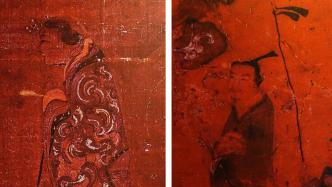

The Mawangdui Han Tomb in Changsha was excavated from 1972 to 1974, which is an important discovery in the archaeological history of China and the world. A total of more than 3,000 precious cultural relics were unearthed from the three tombs, including more than a dozen types of lacquerware, painted pottery, bronze ware, silk calligraphy and paintings, and silk clothes. Among them, the body of Mrs. Xin Zhui unearthed from Tomb No. , and even the fingerprints of hands and feet are still clearly visible, which can be called a miracle of immortality that has lasted for two thousand years.
On March 3, the special exhibition "Han Wuji—Changsha Mawangdui Cultural Relics Exhibition" was exhibited at Shanghai Minhang Museum. It is reported that this is the first time that Mawangdui cultural relics have been exhibited in Shanghai.
Walking into the exhibition hall, from the bright as new lacquerware, item books, soft silk, silk books recording the wisdom of the sages, silk paintings (replicas), and video interpretation under multimedia technology, the audience can understand the history of 2,000 years ago from multiple angles. Western Han civilization.
The Paper reporter saw at the scene that the exhibition exhibited 138 precious cultural relics unearthed from the Mawangdui Han Tomb in Changsha. This is the first encyclopedia of the Han Dynasty, which outlines a social picture of the civilization of the Western Han Dynasty for the audience. The relevant person in charge of the Minhang Museum told The Paper that this is the first time that Mawangdui cultural relics have come to Shanghai. They hope that through the combination of cultural relics and multimedia technology, the audience can understand the historical stories of Mawangdui from multiple perspectives, as well as the cultural, artistic, and science and technology.

Exhibition hall scene
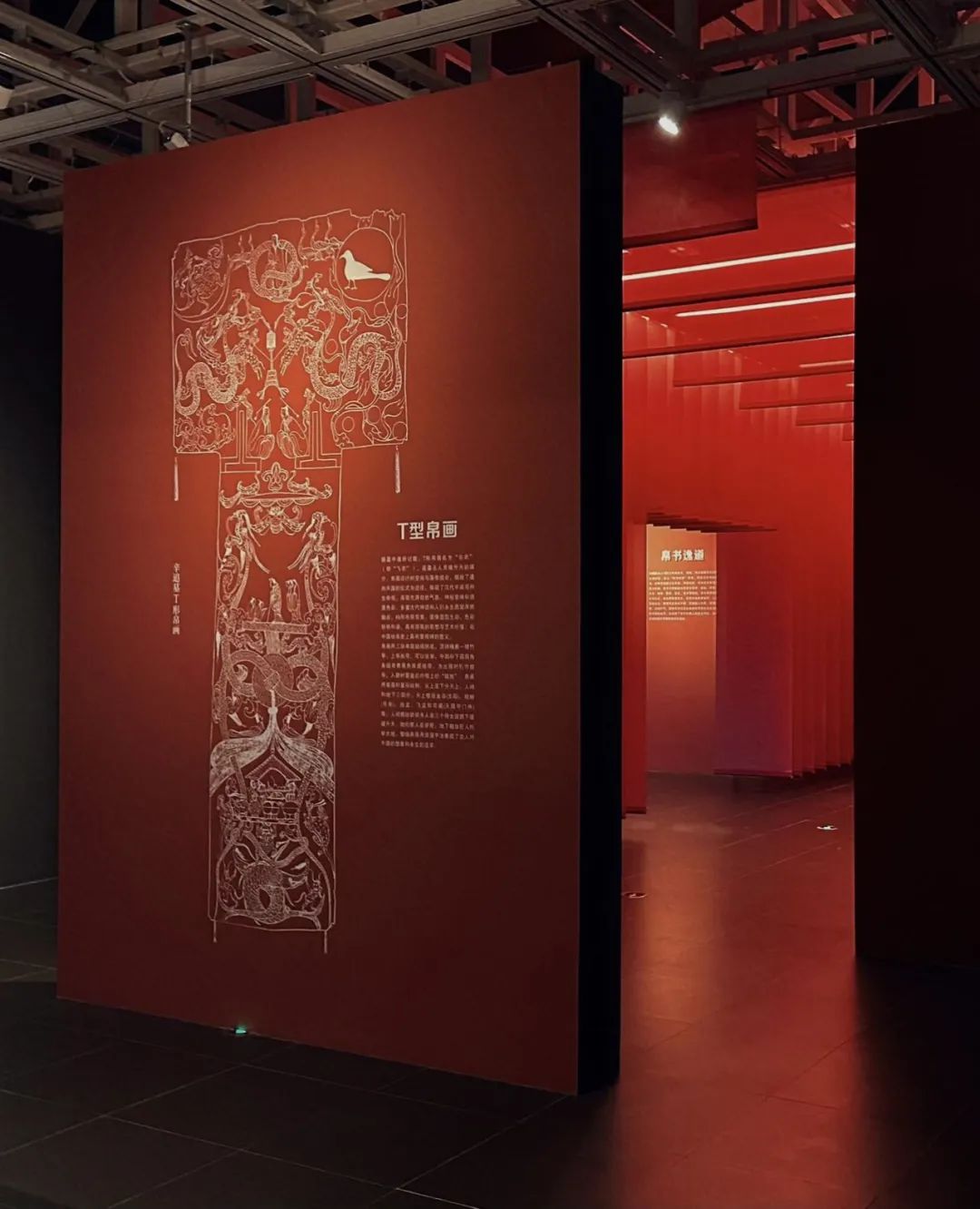
Exhibition hall scene
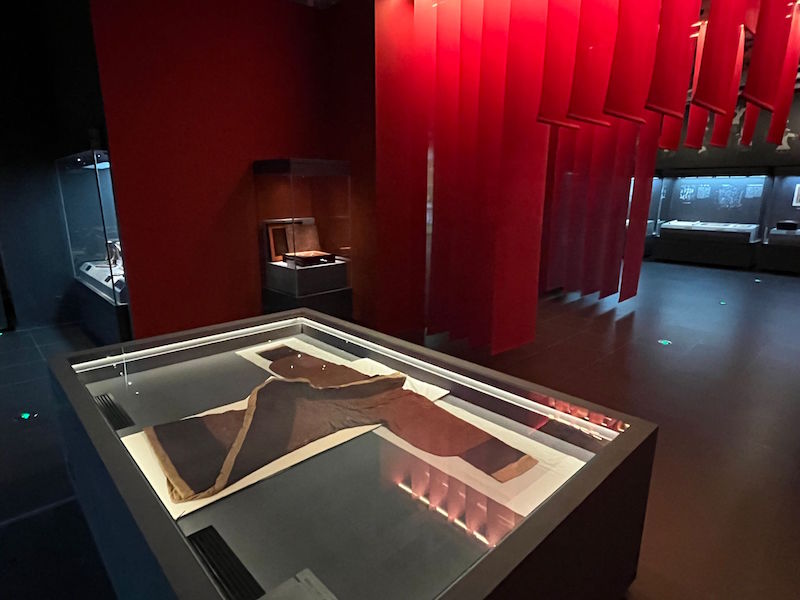
Exhibition hall scene
Regarding the significance of the Mawangdui Han Tomb, Yu Yanjiao, director of the Mawangdui Han Tomb and Collection Research and Exhibition Center of the Hunan Museum, and a secondary research librarian, once said, "Archaeological expert Wang Shimin once wrote that the excavation of the Mawangdui Han Tomb is important in dealing with decayed and fragile cultural relics, Multidisciplinary collaborative research, dissemination of scientific archaeological knowledge, and collation of unearthed documents have far-reaching impacts, and almost no archaeological discovery in China can match. Mawangdui Han Tomb is a huge historical palace, which vividly and concretely reveals to the world the " The rule of Wenjing "the development level of politics, economy, science, military affairs, culture and art during this period."
Archaeological discoveries at Mawangdui
In 202 BC, Liu Bang established the Western Han Dynasty. He believed that one of the reasons why the second Qin Dynasty died was that there were no princes and kings to jointly defend the country. , Constructed the governance system of "county-state system". Changsha Kingdom is the fiefdom of Wu Rui, the founding hero of the Western Han Dynasty, and the owners of the three Han tombs at Mawangdui are Changsha Kingdom Prime Minister Li Cang, his wife Xin Zhui and his son Li Xi. According to historical records, in April of the second year of Emperor Hui of the Han Dynasty, Li Cang, the prime minister of Changsha, was granted the title of marquis, and he reigned for eight years. Later, his son Li Xi inherited the title and reigned for 21 years. Various types of lacquerware from the "Zhou Hou Family".
Not far from the east of Changsha Railway Station in Hunan Province, there are two remaining earth mounds, which are said to be the family cemetery of Ma Yin, king of Chu during the Five Dynasties period, so they are called "Mawangdui". And because the two mounds stand upright on the ground, and the middle is connected like a saddle, it is also called "saddle pile".
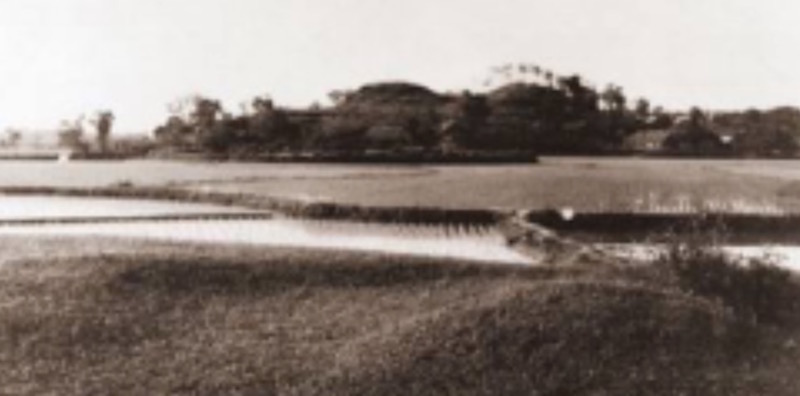
Exterior view of Mawangdui Han Tomb
In 1952, Xia Nai, a well-known archaeologist, led the Institute of Archeology of the Chinese Academy of Sciences to investigate the two mounds of Mawangdui and confirmed that they were Han tombs. In 1956, it was listed as the first batch of key cultural relics protection units in Hunan Province. At the end of 1971, when the resident hospital dug an air-raid shelter to build an underground ward, tomb No. 1 was dug. The Hunan Provincial Museum carried out archaeological excavations on it.
The Paper reporter saw that the first unit of the exhibition, "Shocking Discoveries", used cultural relics, video materials, and tomb structure diagrams to explain the historical stories of the three Han tombs at Mawangdui to the audience.
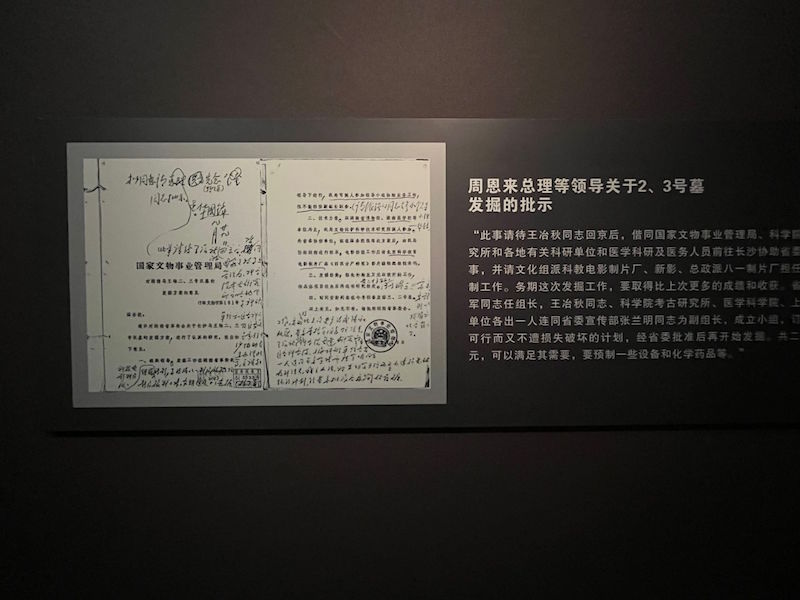
Premier Zhou Enlai's instructions presented on the display board
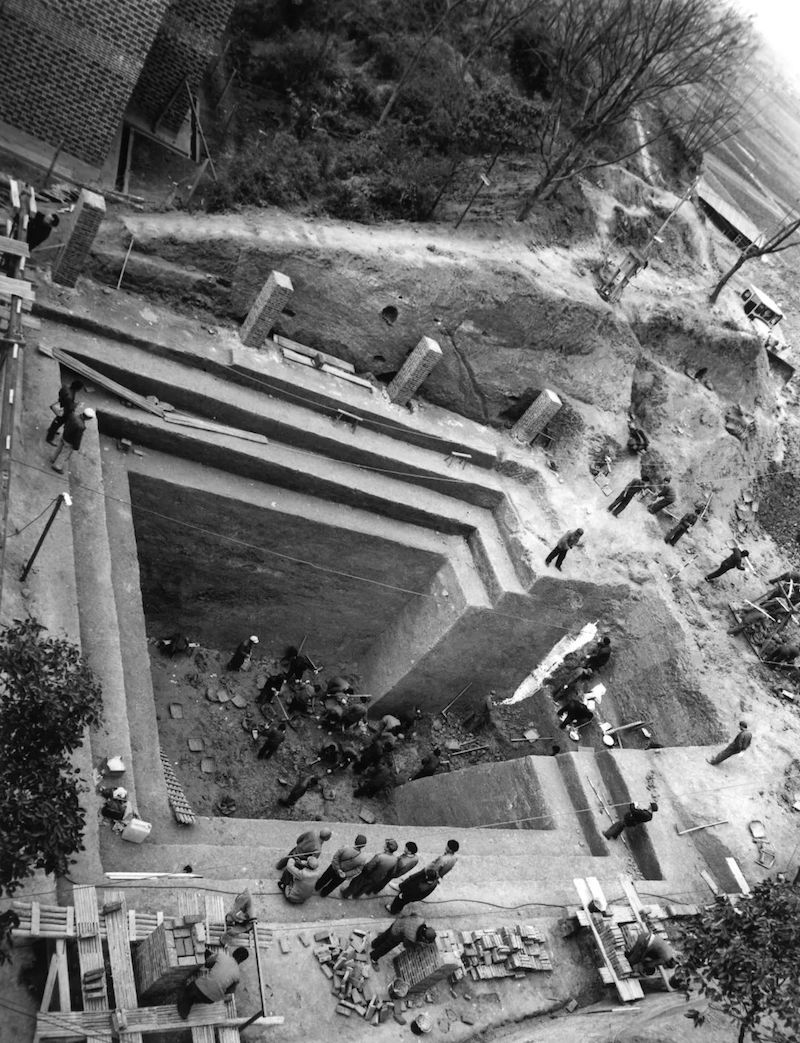
Excavation Site of Tomb No. 3
Among them, Tomb No. 1 is an earth mound in the east. From January to April 1972, archaeologists excavated it under extremely difficult conditions, and unearthed more than 1,000 pieces of precious cultural relics such as lacquered woodware, textiles, and silk paintings. And other leaders attach great importance to it. According to the burial system level, the utensils with the inscriptions "Jihou Jia" and "Jihou Jiacheng", and the private seal of "Concubine Xin Zhui", it is confirmed that the owner of the tomb is "Xin Zhui", Mrs. Jinhou.
The impressive excavation results of Tomb No. 1 have brought unprecedented attention to the excavation of Tomb No. 2 and No. 3. In September 1973, Premier Zhou Enlai personally approved the report on the excavation of No. 2 and No. 3 tombs, and mobilized top scholars from various disciplines across the country to participate in the excavation, research and protection of the tombs. Tomb No. 2 was excavated from December 1973 to January 1974, and more than 200 cultural relics were unearthed, among which three seals confirmed that the owner of the tomb was the Prime Minister of Changsha and the first Marquis Li Cang.
From November to December 1973, Tomb No. 3 was excavated. The tombs are well preserved, and more than 1,600 pieces of cultural relics such as lacquerware, bamboo slips, silk fabrics, and weapons have been unearthed. Among them, more than 130,000 characters are rich in content, filling the historical gap. According to the burial system of the Han Dynasty, the tombs of Xinzhui and Licang were juxtaposed from east to west, and the tomb passages were parallel. It was a joint burial for husband and wife at different points. Tomb No. 3 is located in the south of Xin Zhui's tomb. The owner of the tomb should be after Xin Zhui, and the skeleton was identified as a male about 30 years old. After continuous research and research by archaeologists, most scholars believe that the owner of tomb No. 3 is the son of Xin Zhui, the second generation of Marquis Lixi.
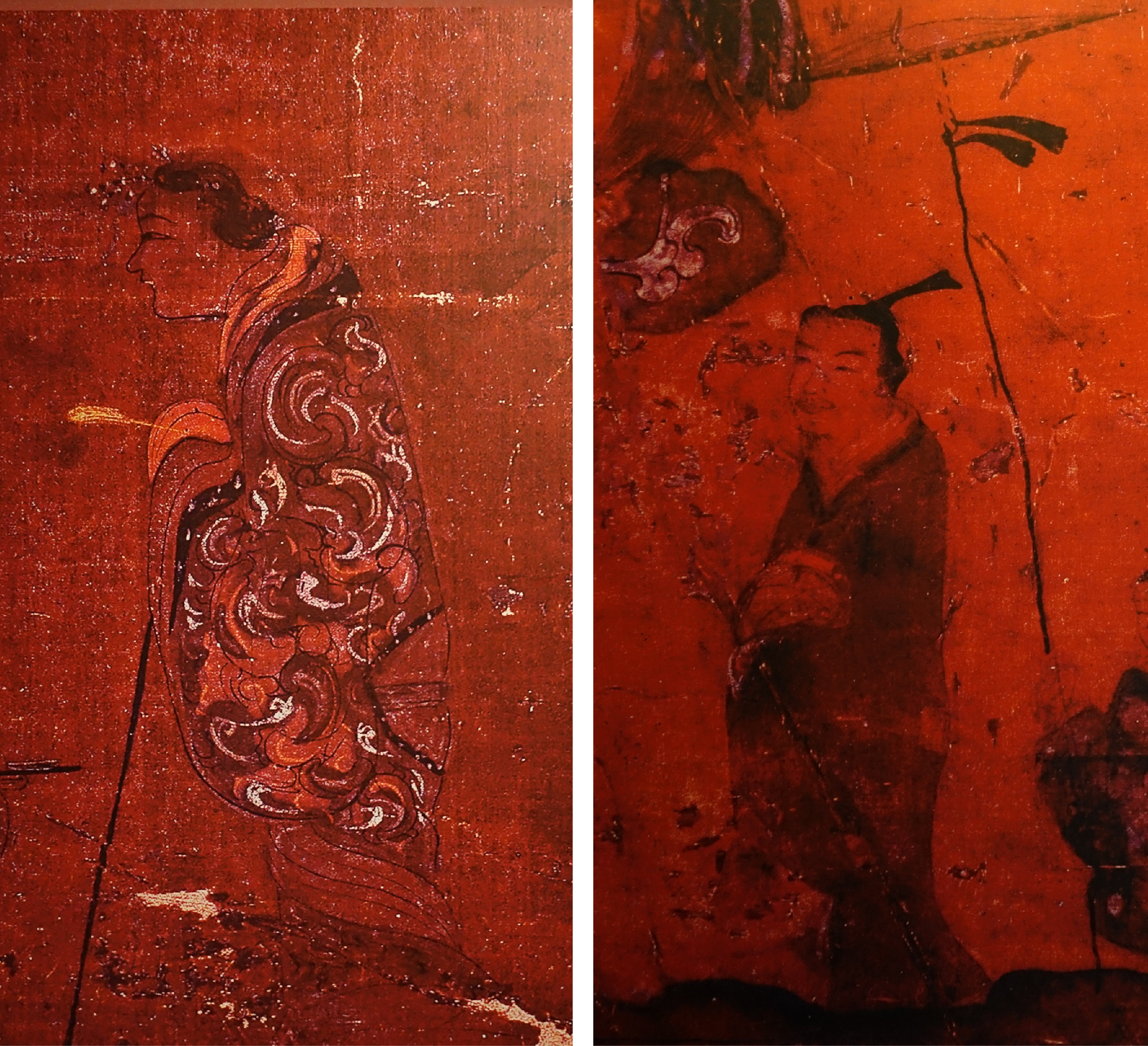
Xin Zhui (left) and Li Xi (right) on the T-shaped silk painting (replica) displayed on the exhibition board
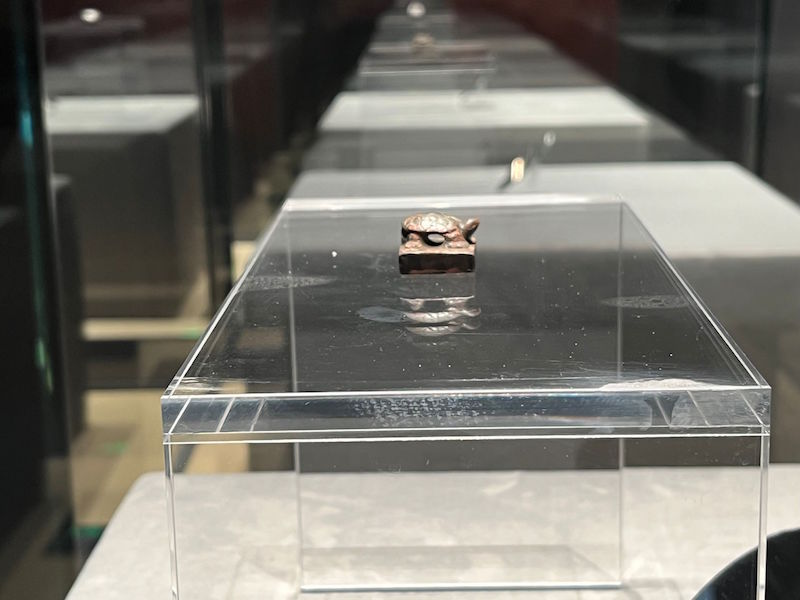
The scene of the exhibition hall, the bronze seal of "The Seal of the Marquis" (replica)
Judging from the structure of the three Han tombs in Mawangdui, Tomb No. 2, Li Cang Tomb, was buried the earliest; Tomb No. 1 (Xinzhui Tomb) broke the seal of Tomb No. Xin Zhui died earlier, and then the second generation Marquis Lixi was buried, while Mrs. Xin Zhui passed away later than her son Lixi. Since then, the three tombs that preserved the supreme glory of Li Cang's family were buried deep in the ground, waiting for rebirth.
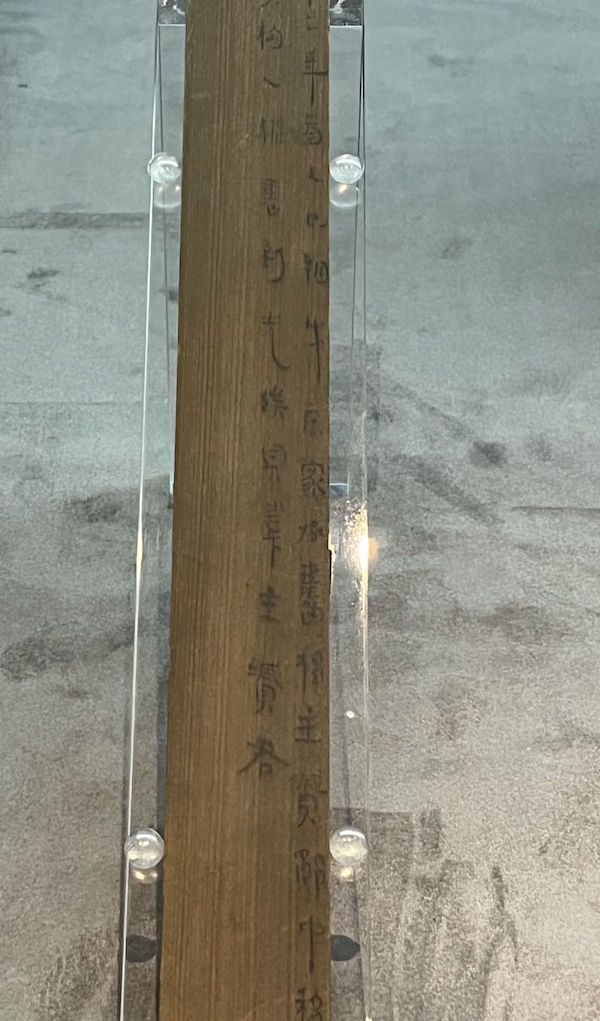
Exhibition site, chronological wooden tablet (replica), the original wooden plaque unearthed from Tomb No. ) The first compilation of things, the book arrives at the first quality, and it is played by the master (burial) of the emperor." After textual research, "Yisishuo Wuchen in February of the twelfth year" is the second day of February in the twelfth year of Emperor Wen of the Han Dynasty (168 BC). The 14th is the date of the burial of the owner of the tomb. Some scholars believe that this wooden tablet is a statement from Jia Cheng to the underground for the owner of the tomb.

Chart: Chronology of the death or burial of the three tomb owners
Walk into the house of Hou Hou and get a glimpse of life in the Han Dynasty
Whether materially or spiritually, the information contained in the Mawangdui Han Tomb is extremely rich, which has enabled generations of researchers to devote themselves to its research, and the glory of princes and princes that has been passed down for thousands of years has finally gradually surfaced. Banquet—Huayi—Eternal Life, the second unit "Walking into the Hou's House" is to interpret the historical information contained in the Mawangdui Han Tomb. This is also the unit with the most exhibits.
The Hou family lived in the era of Wenjing rule in the early Han Dynasty. The officials were high and rich, and the prime minister benefited from Cang's salary and food. On the display board of this unit, the audience can see a tip—Li Cang’s annual income: official salary (20,000 qian x 12 months) + fief tax (700 households x 200 qian) + emperor’s reward + private land Revenue + operating income + other income. The official salary and land rent and tax are 380,000 yuan a year, which is equivalent to the total assets of 19 "middle-class families" in the Han Dynasty, or the total annual income of 127 farmers who cultivated 100 mu of land, and can buy 12,666 shi of rice (341,982 catties today). The person in charge of the Minhang Museum told the reporter, "According to the conversion, Li Cang's annual income is equivalent to 600,000 RMB today."
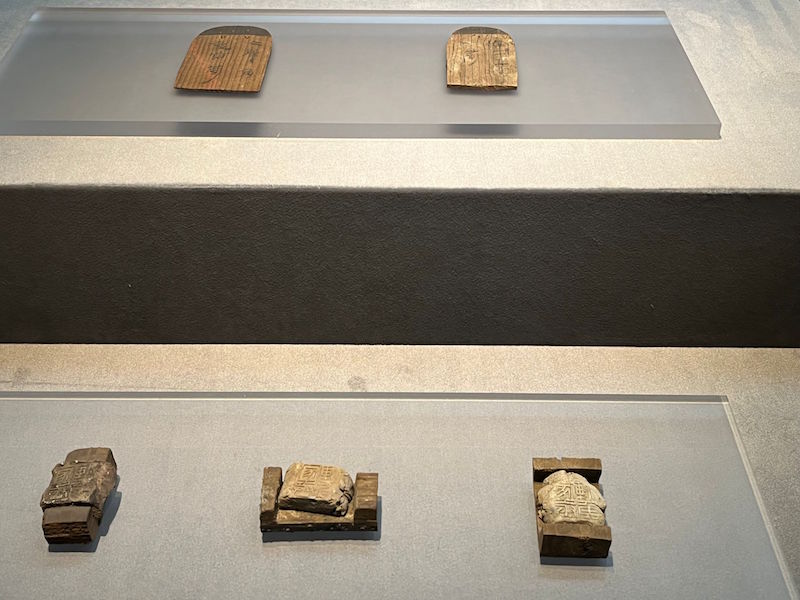
Exhibition hall scene
In addition to saving money, they also accumulated wealth, including ivory, rhino horn, pearls, jade and other treasures in their family collections. According to the proposal of Emperor Wenwen of the Han Dynasty, no gold, silver and bronze wares were found in the tombs. Instead, copper coins, gold coins, ivory, and rhinoceros horns were all replaced by clay and wooden objects. As a continuation of wealth from the human world to the underworld, a large number of muddy money and treasures symbolizing wealth appeared in the tomb.
In this section, the audience can first see a group of items that symbolize wealth, such as clay "Ying scale", Tao Zhuji, Tao Jinbing and so on. In addition, there is a bamboo scorpion with Nie coins on the side, which is similar to a storage box today. When this bamboo scorpion was unearthed, it contained Nie coins, and there was a wooden sign "Zen Nie coin scorpion" tied to the bamboo scorpion. It is reported that a total of 48 bamboo baskets were unearthed from the tomb of Xinzhui, which are basically the same size. In addition to containing various food, Chinese herbal medicine spices, and clothing spices, they also contained sweet potato horns, wooden ivory, wooden bibs, pottery "Ying scales", and pottery pearls. , Nie coins and other bright objects, implying a thousand pieces of gold, tens of millions of money, and a thousand pieces of cloth.
In the subsequent showcase, a group of funerary figurines are presented. During the pre-Qin period, the invention and popularization of figurines gradually replaced the burial of living people used in funeral rites. Wooden figurines were popularly buried in southern Chu. This custom continued into the Han Dynasty, and the popular area expanded.

Figurines of "Crowned Man" and Clothed Maid in the exhibition hall, unearthed from Xin Zhui's tomb

figurines of handyman servants
This unit also presents the food culture of the Han Dynasty to the audience. The diet structure of the Han Dynasty was diverse, and with the prosperity of the country, the breadth of ingredients, the abundance of food, the beauty of table utensils, and the essence of food methods all flourished. In the burial objects of the Mawangdui Han Tomb, a large amount of meat, grain, fruit, wine, cakes, etc. were found, revealing the richness and variety of food types in the Han Dynasty, and also reflecting the affluence of the life of the Hou family. All kinds of lacquerware for food are thick and elegant in shape, bright in color and vivid in design. The combination of delicious food and beautiful utensils shows us the grand occasion of the banquet of the nobles in the Han Dynasty.

Food booklet (wooden sign)

Food dispatch book (bamboo slips), unearthed from Xin Zhui’s tomb in the early Western Han Dynasty
In the exhibition hall, the most important display is undoubtedly the food collection, which shows us the ingredients of the Han Dynasty. A large number of food materials were unearthed from the Mawangdui Han Tomb, including grains such as rice, wheat, millet, millet, and beans, and meat such as poultry, livestock, fish, and game. The staple foods recorded in the dispatch book include cooked rice and sticky rice. Cooked rice is cooked food of five grains, including rice, wheat rice, millet rice, yellow millet rice, and white millet rice. Sticky rice is a meal made by adding other foods, such as sticky rice with millet and jujube.
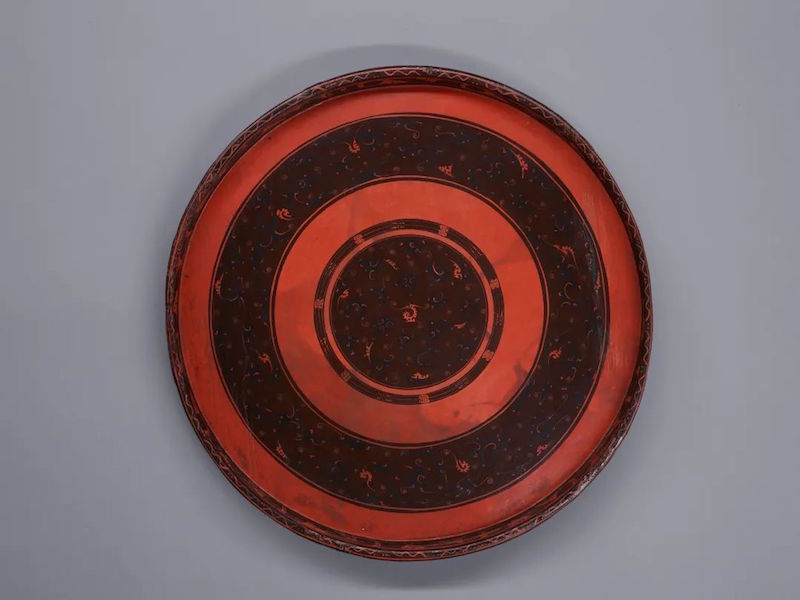
Cloud dragon pattern lacquer plate
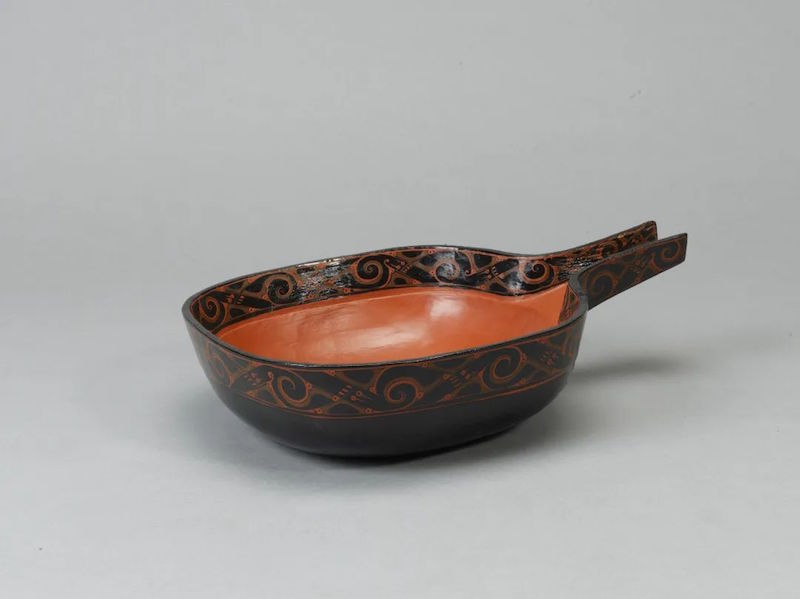
"Xi Hou's family" cloud pattern lacquer

"Jun Xing Liquor" cloud pattern lacquer ear cup

Exhibition hall scene
Rich clothes and fine food are people's dream of happiness. In the eyes of the ancients, the "life" of the dead is no exception. Seven sets of grooming utensils for men and women were unearthed from the Mawangdui Han Tomb, which shows that the owner of the tomb paid attention to grooming. There are hundreds of pieces of clothing and materials, including various fabrics such as silk, yarn, silk, silk, brocade, and linen, which are decorated with printing and dyeing, printing, painting, and embroidery. The various styles of clothing for the four seasons are well preserved, bright in color and exquisite in workmanship, leading Changsha's clothing fashion and witnessing the outstanding achievements of the textile industry in the early Han Dynasty.
The relevant person in charge of the Minhang Museum said that one of the most attractive cultural relics in the exhibition hall is the double-layer Jiuzi lacquer dowry unearthed from Xin Zhui's tomb. This dowry box is the dowry box used by Mrs. Hou Xin Zhui to store her dressing utensils and personal items during her lifetime. There are two layers of upper and lower layers, and there are three parts together with the cover. The cover and the body are made of laminated tires, the double bottom is made of wood, the surface of the device is painted with dark brown lacquer, and then gold leaf is pasted on the lacquer. Oil painting on gold leaf. Gold, white and red oil paints are used to paint cloud patterns on the top of the cover, the periphery, the outer walls of the upper and lower floors, the inside of the mouth, and the inner part of the cover and the upper and lower sides of the upper and lower middle partitions. The rest is painted red. On the upper layer are placed three pairs of gloves, a silk cotton towel, a belt, and a silk "Longevity Embroidered" mirror coat. There are 9 grooves chiseled on the bottom floor of the lower floor, and 9 small boxes are placed in the grooves, which contain cosmetics, rouge, silk powder puffs, combs, grates, needle clothes, etc.
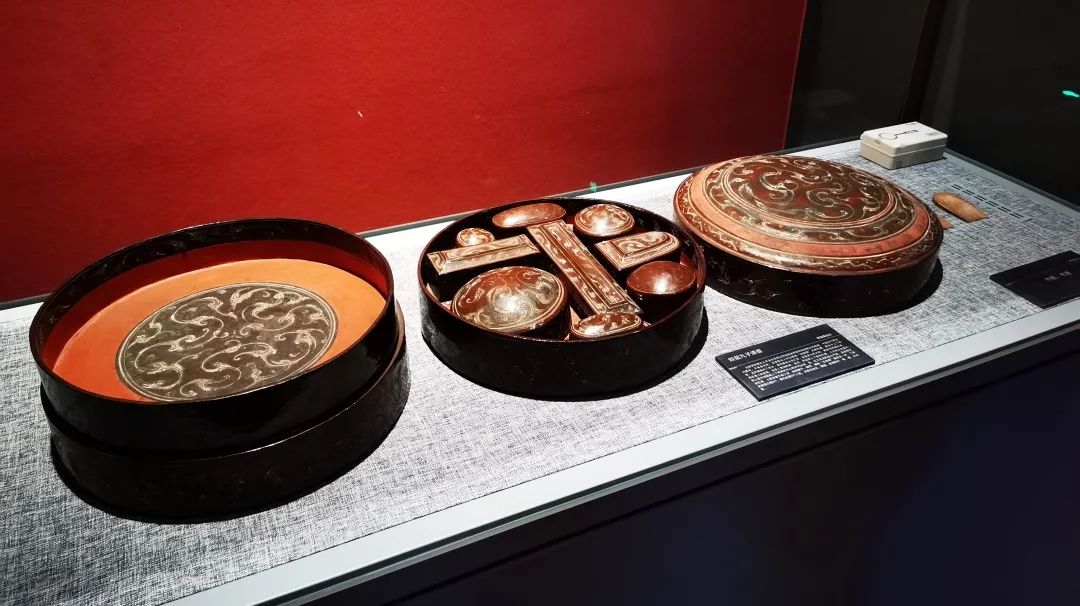
Exhibition hall scene, double-layer Jiuzi lacquer dowry, unearthed from the tomb of Xin Zhui
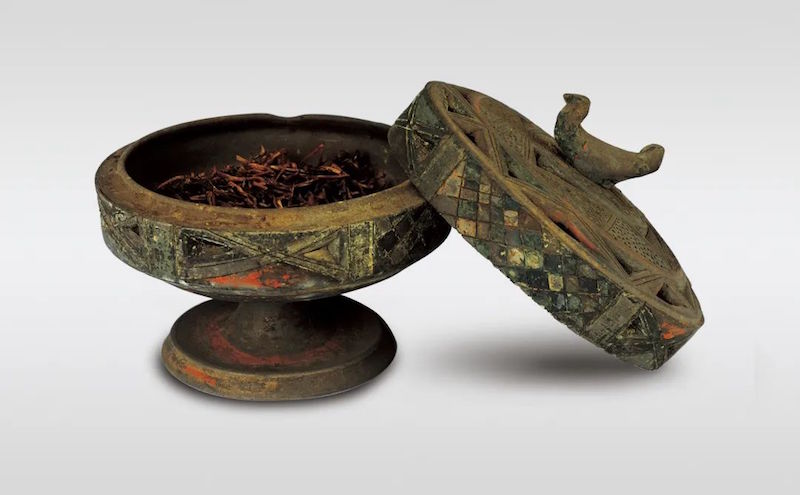
Painted pottery smoker, unearthed from the tomb of Xin Zhui

Ocher yellow silk "dogwood flower" braid embroidery
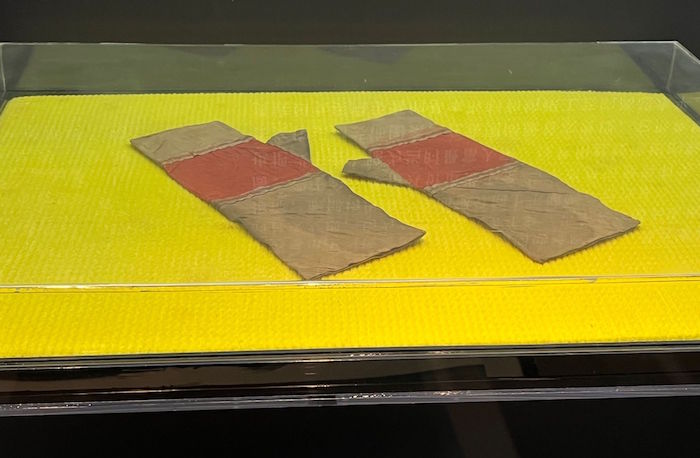
On the site of the exhibition hall, there are vermilion diamond-patterned glove, unearthed from the tomb of Xin Zhui, which is the first discovery in the archaeological history of our country. The upper and lower sides of the palm are decorated with seal character "Qianjin" for a week. "Qianjin" means that its value is equal to a thousand gold, which is related to Xin Zhui's status.
In addition to the cultural relics unearthed from the tomb of Xinzhui, this section also presents many precious cultural relics unearthed from the tomb of Lixi, such as silk scripts and slips unearthed from the tomb, which are all manuscripts from the Warring States period to the early Han Dynasty. In the fields of politics, military affairs, astronomy, geography, medicine, history, art, etc., most of them are lost books that survived "burning books and burying Confucianism" and then lost them. These bamboo slips and silks reflect the intellectual structure and cultural accomplishment of the Hou family of the Han Dynasty and the nobles of the Han Dynasty. They are precious materials for the study of Qin and Han cultural thoughts, scientific and technological achievements, calligraphy art, etc., and are highly valued by academic circles at home and abroad.

Silk script "Miscellaneous Accounting of Astronomy and Meteorology", unearthed from the tomb of Lixi
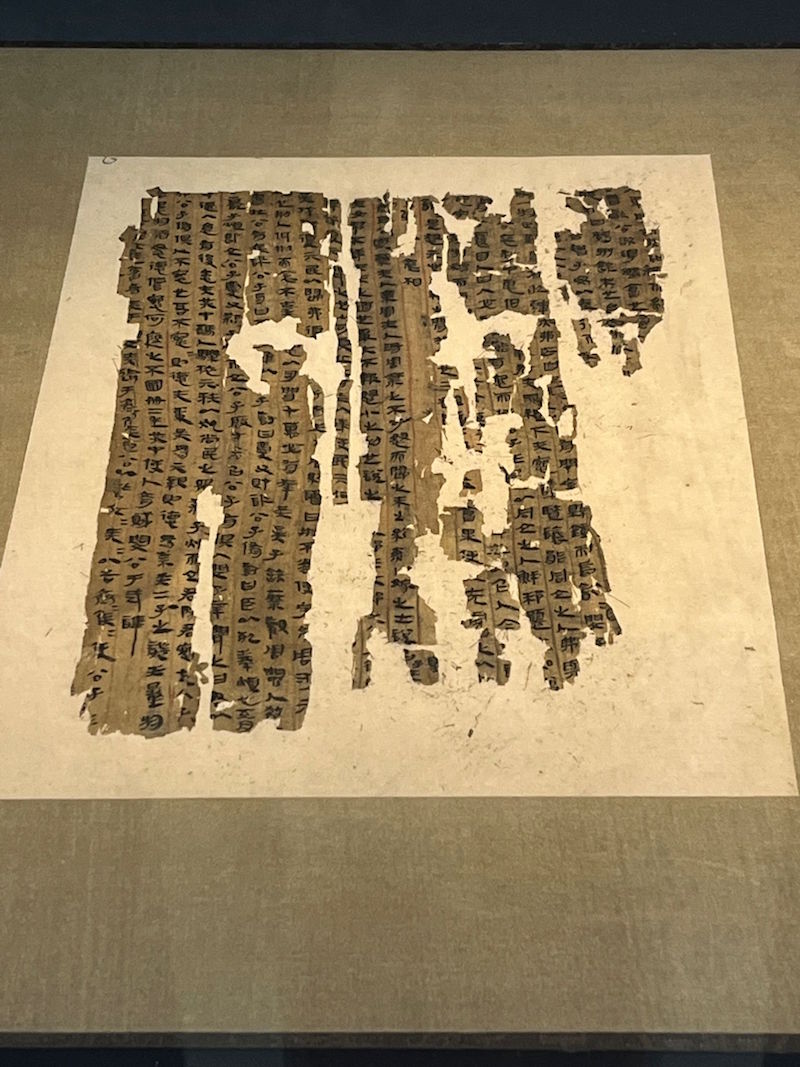
The scene in the exhibition hall, the silk book "Spring and Autumn Stories"

The scene of the exhibition hall, silk book "Book of Changes"
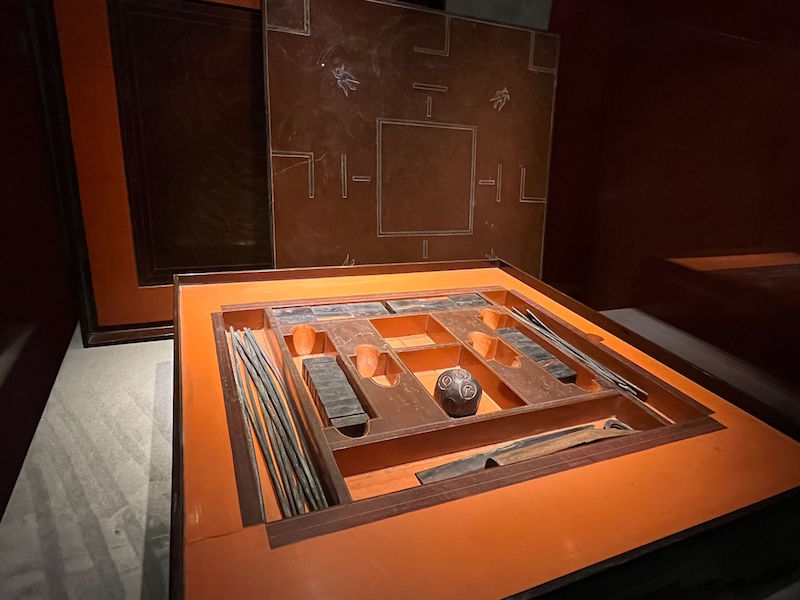
In the exhibition hall, there are Bo tools (replicas), the original ones unearthed from the tomb of Lixi. Boxi is an intellectual competitive game. It was popular in the pre-Qin Dynasty, and it was especially popular in the Han Dynasty. It was loved by all officials from the emperor to the common people, and the gameplay has been lost.
Beliefs in the Han Dynasty with multimedia narration
The pursuit of immortality and ascension to heaven was a common belief in the society of the Han Dynasty. In order to continue the glory of life after death, and even satisfy the desires that cannot be realized in the world, the Han people arranged the tomb as an ideal scene where humans and gods coexisted, and imagined that wealth would still belong to them after entering the heaven.
From an artistic point of view, the three tombs of Mawangdui can be regarded as a well-structured "work". Influenced by the outlook on life and the universe at that time, people expressed their understanding of life and death with various materials and artistic languages, and created images of the afterlife. Therefore, Mawangdui Han Tomb is built into a mixed space of the world, the underworld, and the fairy world. It is not only the underground home of the dead, but also a place for the soul to transform.
Although the originals of the famous T-shaped silk painting of Xin Zhui's tomb and the painted lacquer coffin on Zhudi could not come to the scene, the organizer still used the combination of reproductions and multimedia images to tell the audience specific thoughts and arts in the early Han Dynasty.
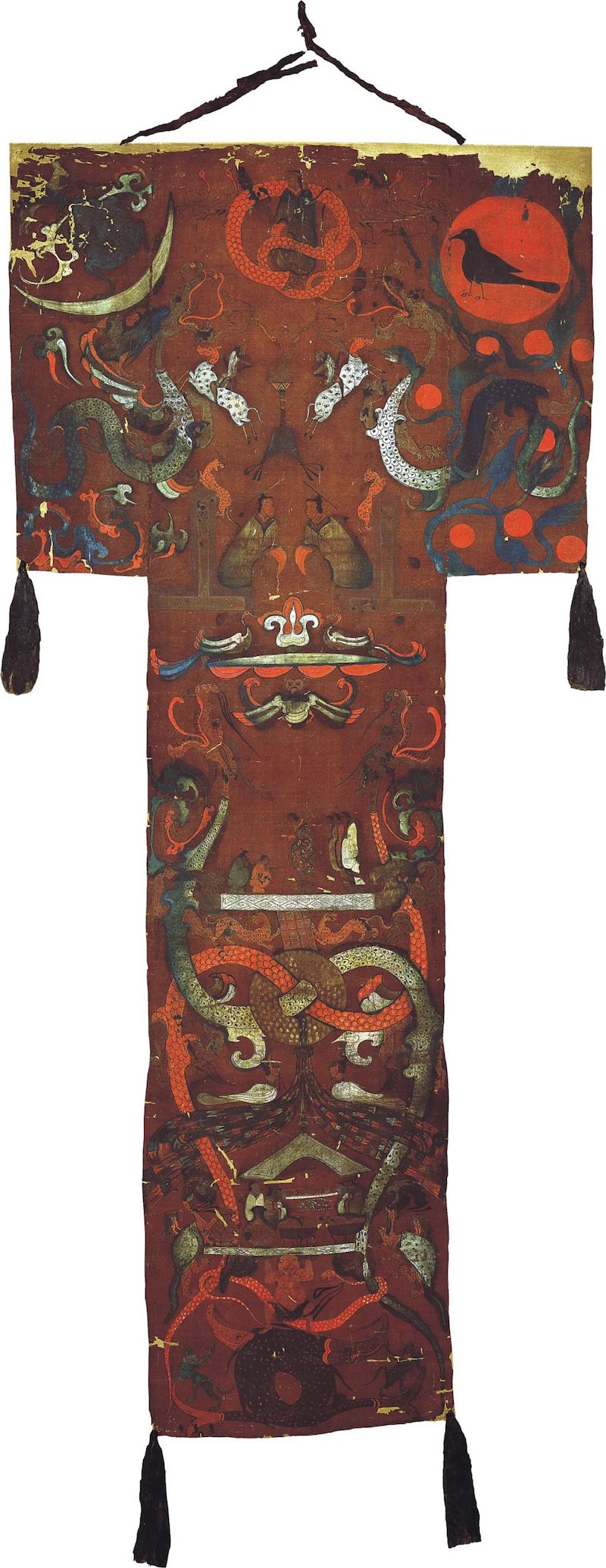
T-shaped silk painting of Xin Zhui's tomb (this exhibit is a replica)
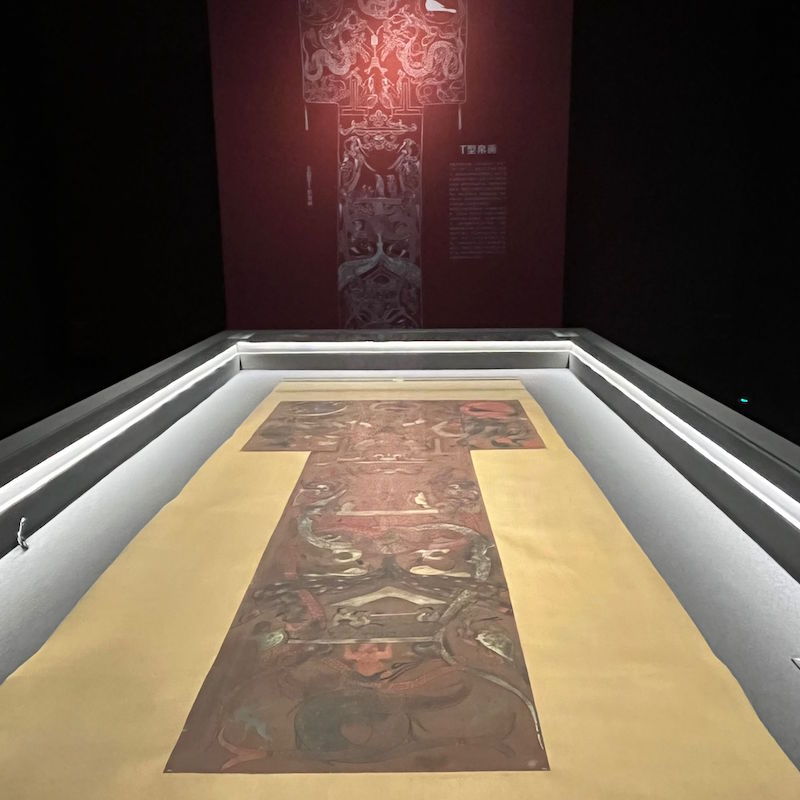
Exhibition hall scene, T-shaped silk painting of Xin Zhui’s tomb (replica)
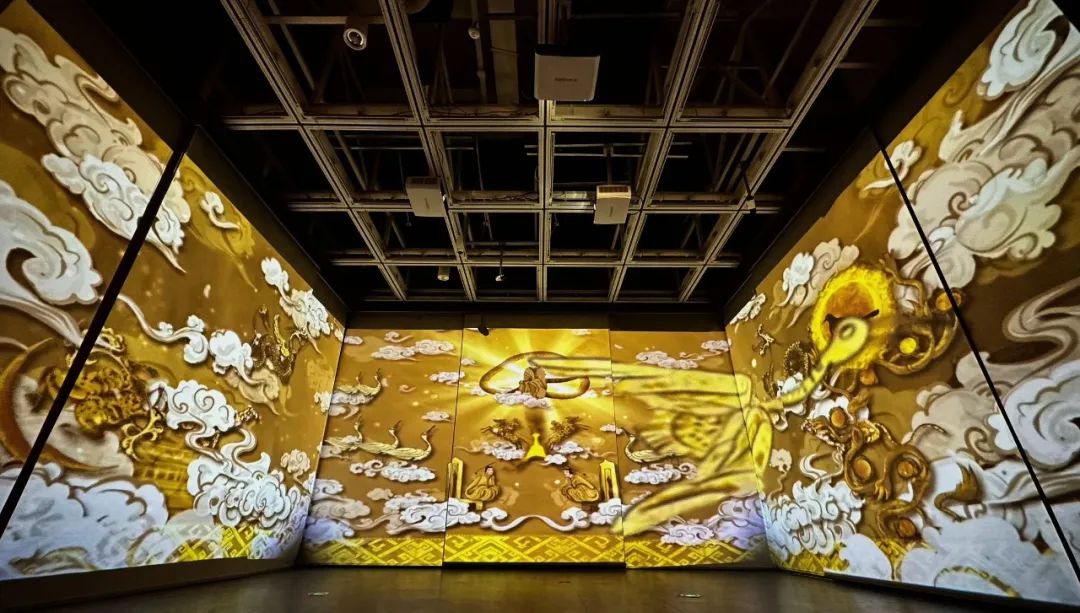
In the exhibition hall, multimedia interpretation of silk paintings
According to the records in the tomb, the T-shaped silk painting is called "Feiyi" (ie "Feiyi"), and it is the medium for the tomb owner's soul to ascend to heaven. The combination of space and images designed in the silk painting depicts the rituals and paths leading to the kingdom of heaven, reflecting the Han Dynasty's outlook on the universe and life. The picture is full of natural, mysterious and romantic colors, and multiple ancient myths and people's wish for eternal life are perfectly integrated. With perfect structure and layout, vivid image modeling, bright and harmonious colors, it has high ideological and artistic value and is a milestone in the history of Chinese painting.
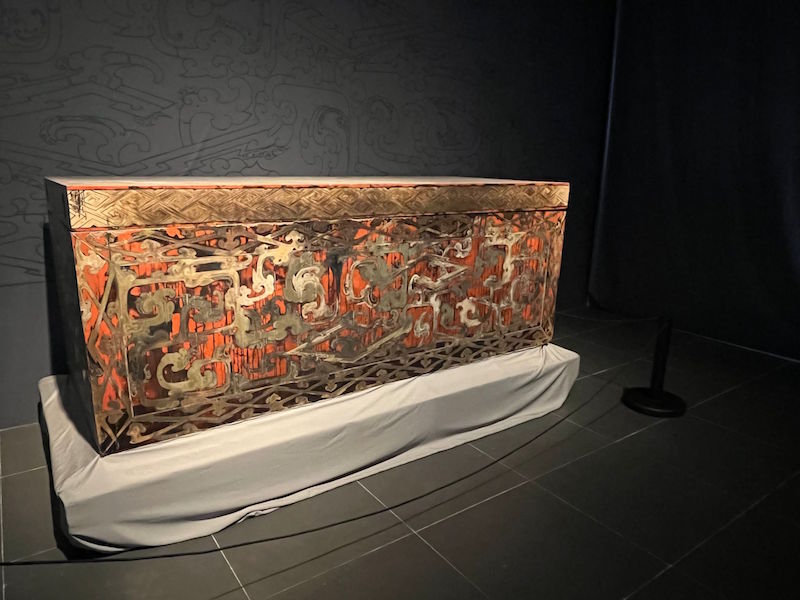
The scene of the exhibition hall, the painted lacquer coffin in Zhudi (replica), the original unearthed from the tomb of Xin Zhui

The exhibition board at the end of the exhibition hall tells about the four-fold coffin
In the coffin chamber of Xin Zhui's tomb, there are four layers of lacquered coffins, which are tightly fitted and made of catalpa wood. According to the etiquette system of the Han Dynasty, only high-ranking nobles can enjoy them. The set of coffins from outside to inside are: black lacquer plain coffin, black ground painted lacquer coffin, vermilion ground painted lacquer coffin, and brocade lacquer coffin, implying the journey of the soul of the tomb owner from the dark space to the fairy mansion of heaven. Two of the painted lacquer coffins are fantastic in content, romantic in style, and rich in Chu culture, representing the highest level of lacquer painting in the Han Dynasty. The brocade lacquer coffin is the only one found so far.
Attachment: Why did Xin Zhui's body not rot
The organizer told reporters that in addition to telling the audience history and art, the exhibition also tells the scientific knowledge of how Xin Zhui's body has been preserved for thousands of years.
The body of Mrs. Chihou "Xin Zhui" was found in the inner coffin of Tomb No. 1. When unearthed, she was 1.54 meters tall and weighed 34.3 kilograms. Although it has been sleeping underground for more than 2,100 years, its appearance is well preserved, its whole body is moisturized, its subcutaneous soft tissue is soft and elastic, and its joints are still movable. The eyelashes and nose hairs are still there, the tympanic membrane in the left ear is intact, and the finger and toe lines are clear.
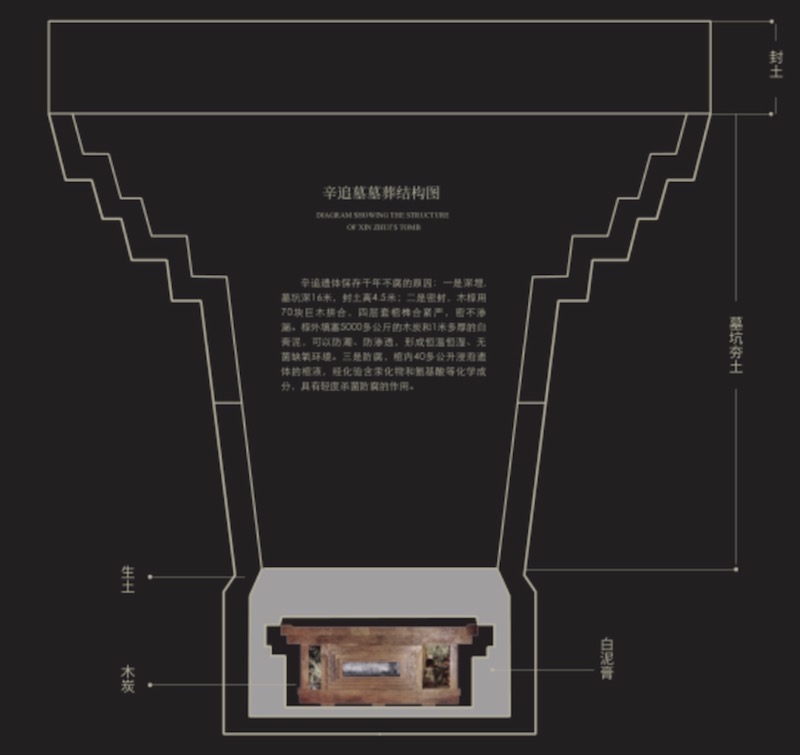
Structural drawing of Xinzhui Tomb
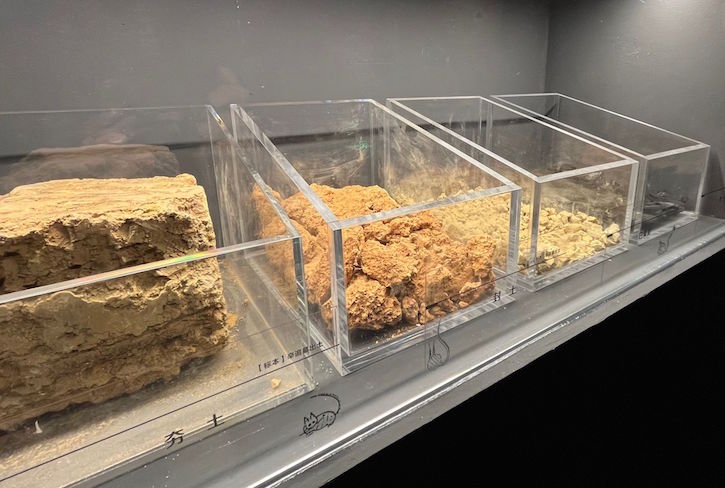
Exhibition hall scene, rammed earth specimens
The main reasons are: one is deep burial, the tomb pit is 16 meters deep, and the sealing soil is 4.5 meters high; the other is sealing, the wooden outer coffin is made of 70 pieces of giant wood, and the four-layer coffin is tightly closed with tenons to prevent leakage. More than 5,000 kilograms of charcoal and more than 1 meter thick white plaster mud are filled outside the outer coffin, which can prevent moisture and seepage, forming a constant temperature and humidity, sterile and hypoxic environment; the third is antiseptic, more than 40 liters of coffin fluid soaked in the coffin, It contains chemical components such as mercury compounds and amino acids, and has mild antiseptic and antiseptic effects.
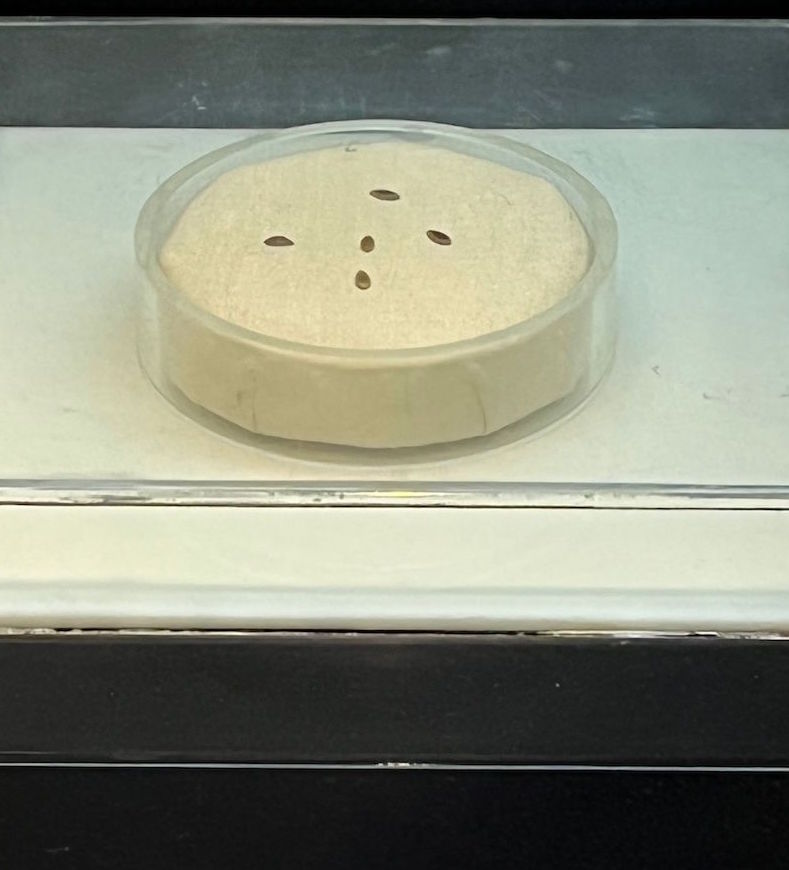
At the exhibition hall, the melon seeds found in Xin Zhui's stomach
The physical examination found that Xin Zhui's internal organs were well preserved, the collagen fibers were similar to those at the time of his death, the lungs were as thin as a hair, and the vagus nerve experience could be counted. There were still coagulated blood clots in the blood vessels, and his blood type was type A. According to pathological examination, she suffered from various diseases, such as coronary heart disease, atherosclerosis, and multiple cholelithiasis, and found whipworm eggs, pinworm eggs, and schistosome eggs in the rectum and liver. 138 semi-sweet melon seeds were found in her esophagus and stomach, which shows that she died during the ripening season of melons. According to the inference of the symptoms, the coronary heart attack may be caused by biliary colic and he died at the age of about 50 when he died.
The exhibition "Han·Wuji—Changsha Mawangdui Cultural Relics Exhibition" will be on display until May 3.



